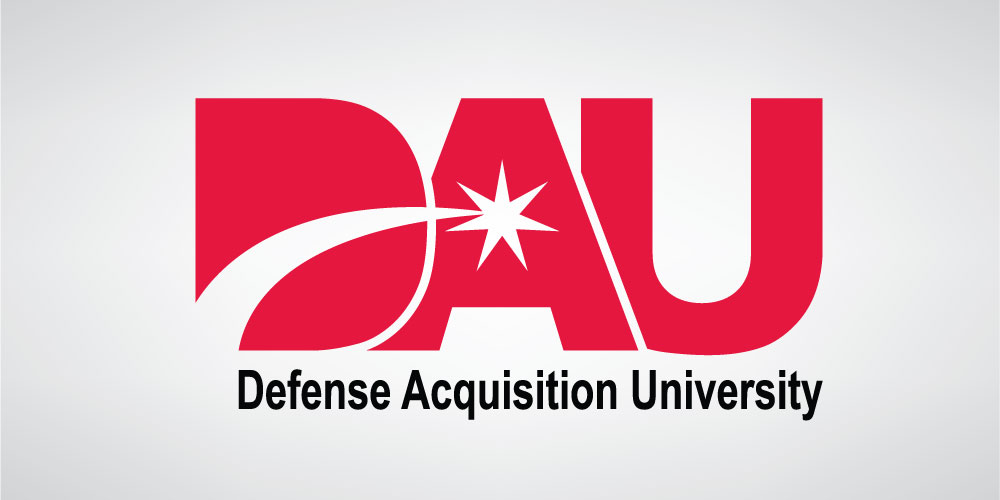
by Abel Trevino
Defense Acquisition University (DAU) regularly develops case studies for educational purposes to emphasize acquisition in action. In DAU’s case-study-based curriculum, students spend weeks reviewing case studies that include the Army combat glove, the Navy’s advanced medium-range air-to-air missile, the Air Force F-18 software acquisition and dozens of others. While it often takes months to research and develop these case studies, DAU is also looking at ways to make the process go faster. With support from Ellen M. Lord, undersecretary of defense for acquisition and sustainment, DAU personnel are speeding up the release cycle by collecting acquisition stories and developing micro-case studies in defense innovation as videos and podcasts for immediate use. Turning around the media in a matter of days instead of weeks means members of the defense acquisition workforce can learn what is being used in the field right now instead of last year.
With that in mind, it is fitting that the first of these innovation stories was about Defense Innovation Unit Experimental. Then-Secretary of Defense Ash Carter stood up the unit, commonly referred to as DIUX, in 2015 to quickly provide funding for innovative private-sector technology and get it into the hands of Soldiers in days instead of months and years. One of their recent successes was with the Shield AI mapping drone, a handheld quadcopter that will give troops eyes inside buildings before they rush in.
DIUX Leads the Way with Other Transaction Authority
Lauren Schmidt, pathways director for the program, explained that when contracting this quadcopter with Shield AI, DIUX chose other transaction (OT) authority over a traditional Federal Acquisition Regulation (FAR) route not to circumvent any regulations, but instead to better tailor—and therefore speed up—development of the drone.
“DIUX chose to use OTs because it allows us to work with and reach out to a nontraditional [government contractor] on a fast, flexible and collaborative basis … we can solicit for, negotiate and award these OTs in a very short period of time, often as quickly as 60 to 75 days,” Schmidt said.
OTs are used to support research and development for prototype acquisition from companies that do not usually do business with DOD. Because much of this includes proprietary, cutting-edge technology, other transaction authority prototypes are not awarded through standard contracts and agreements. This provides a legal framework outside FAR with more flexibility to speed up the procurement timeline, particularly when making immediate adjustments to a prototype.
“Because all of the terms and conditions of the OT are negotiable, we can negotiate directly with those companies and design an OT that works best for both parties,” she said. “We can actually sit across from the company and design projects collaboratively together in a much more agile fashion than you can do under a FAR-based contract.”
Other transaction authority may have been the contracting vehicle for the Shield AI quadcopter prototype, but DIUX also reframed the contract to focus on solving the problem instead of generating a list of requirements that would have to be fulfilled.
“The acquisition process is complex,” Schmidt said. “It’s not just contracting, but it’s your overall acquisition model and your requirements. We try and focus not just on better speed to market and better outcomes from contracting through OTs, but also on the requirement side by focusing on problems rather than prescriptive requirements.”
This approach to problem-solving sped up development time by creating a flexible contracting environment that enabled the government to sit down with the developer and make adjustments to prototypes based on warfighter feedback.
“… Because of the flexibilities that OTs and their competitive process provide, we were able to modify the OT quickly in response to that direct warfighter feedback,” Schmidt said. “That gave us a much faster iterative loop of design and allowed us to get a better product that better met the needs of our warfighters on the ground.”
OTs provide a lot of flexibility to tailor contracts outside of traditional FAR regulations, which can make some people hesitant to employ them. However, Schmidt said that this flexibility is more a feature than a risk.
“There’s very little regulation or guidance on how you have to use them, and sometimes that can scare people off,” she said. “You can use the OT statute to design a process that works best for your team, for your mission, for your customers, so use this flexibility to the maximum extent practical. … OTs allow for a lot more flexibility throughout the life of the performance of the OT, not just in the solicitation or award for it. So it allows you to really respond to the needs of the project on the ground and respond to that engineering.”
The full interview with Lauren Schmidt can be found on DAU’s website. Do you have a success story to share? For more information, contact DAU Public Affairs at communications@dau.mil.
This article will be published in the July – September 2018 issue of Army AL&T magazine.
Subscribe to Army AL&T News, the premier online news source for the Acquisition, Logistics, and Technology (AL&T) Workforce.







